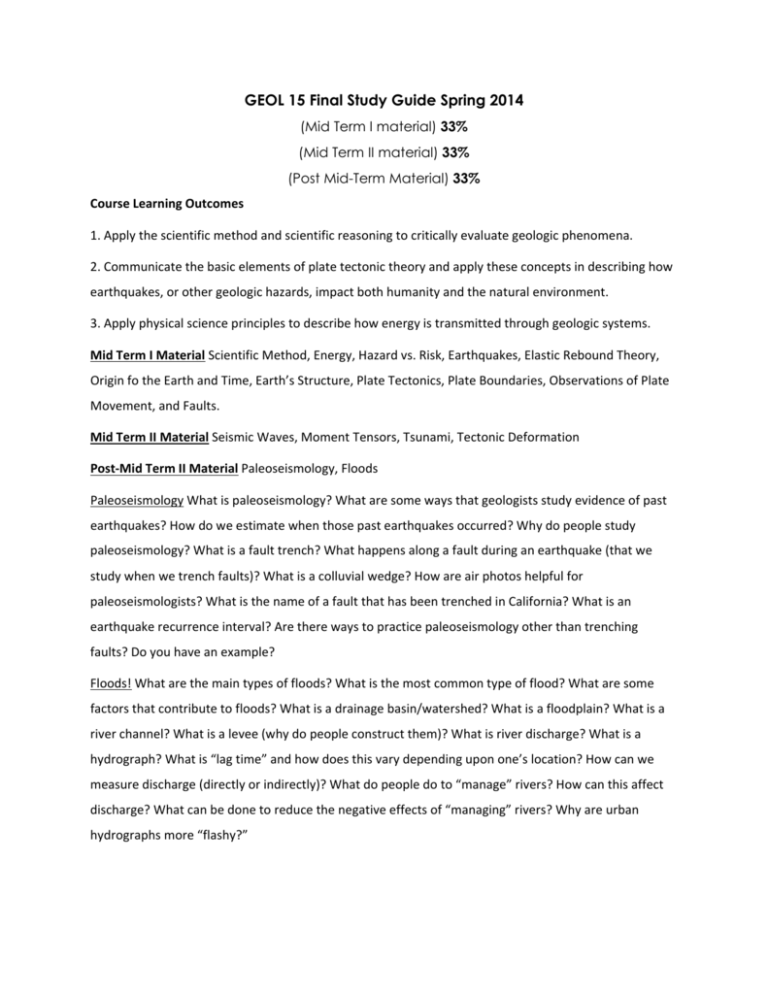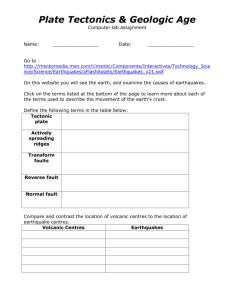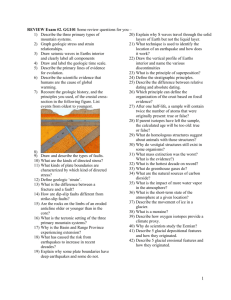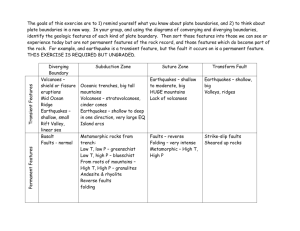GEOL_15_Spring_2014_..
advertisement

GEOL 15 Final Study Guide Spring 2014 (Mid Term I material) 33% (Mid Term II material) 33% (Post Mid-Term Material) 33% Course Learning Outcomes 1. Apply the scientific method and scientific reasoning to critically evaluate geologic phenomena. 2. Communicate the basic elements of plate tectonic theory and apply these concepts in describing how earthquakes, or other geologic hazards, impact both humanity and the natural environment. 3. Apply physical science principles to describe how energy is transmitted through geologic systems. Mid Term I Material Scientific Method, Energy, Hazard vs. Risk, Earthquakes, Elastic Rebound Theory, Origin fo the Earth and Time, Earth’s Structure, Plate Tectonics, Plate Boundaries, Observations of Plate Movement, and Faults. Mid Term II Material Seismic Waves, Moment Tensors, Tsunami, Tectonic Deformation Post‐Mid Term II Material Paleoseismology, Floods Paleoseismology What is paleoseismology? What are some ways that geologists study evidence of past earthquakes? How do we estimate when those past earthquakes occurred? Why do people study paleoseismology? What is a fault trench? What happens along a fault during an earthquake (that we study when we trench faults)? What is a colluvial wedge? How are air photos helpful for paleoseismologists? What is the name of a fault that has been trenched in California? What is an earthquake recurrence interval? Are there ways to practice paleoseismology other than trenching faults? Do you have an example? Floods! What are the main types of floods? What is the most common type of flood? What are some factors that contribute to floods? What is a drainage basin/watershed? What is a floodplain? What is a river channel? What is a levee (why do people construct them)? What is river discharge? What is a hydrograph? What is “lag time” and how does this vary depending upon one’s location? How can we measure discharge (directly or indirectly)? What do people do to “manage” rivers? How can this affect discharge? What can be done to reduce the negative effects of “managing” rivers? Why are urban hydrographs more “flashy?”







